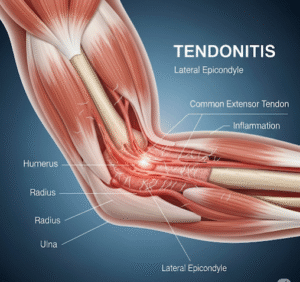Overview
Heart Rate Variability (HRV) refers to the variation in time intervals between consecutive heartbeats, measured in milliseconds. Unlike a steady heart rate, a healthy heart demonstrates slight fluctuations between beats, reflecting the dynamic balance of the autonomic nervous system (ANS).
HRV has emerged as a key indicator of cardiovascular health, stress levels, and overall autonomic function. Higher HRV generally signifies a flexible and resilient cardiovascular system, while low HRV may indicate stress, fatigue, or underlying medical conditions.
In South Korea, cutting-edge cardiology and wellness centers use HRV monitoring as part of preventive health, athletic optimization, and management of chronic diseases, combining technology with personalized care.
Key Facts
➲ HRV measures the time interval variations between heartbeats, also called RR intervals.
➲ It reflects autonomic nervous system activity, including sympathetic (“fight or flight”) and parasympathetic (“rest and digest”) influences.
➲ High HRV is associated with good cardiovascular fitness, resilience to stress, and recovery capacity.
➲ Low HRV may signal stress, fatigue, cardiovascular disease, or autonomic dysfunction.
➲ HRV is influenced by age, lifestyle, physical activity, sleep quality, and medical conditions.
➲ Korea employs advanced wearable devices and clinical assessments to track HRV for health optimization.
What is Heart Rate Variability (HRV)?
Heart Rate Variability (HRV) is the measurement of fluctuations in the time interval between consecutive heartbeats, often recorded via ECG, chest straps, or wearable devices.
The autonomic nervous system regulates heart rhythm:
➲ Sympathetic activity – accelerates heart rate during stress, exercise, or emergencies.
➲ Parasympathetic activity – slows heart rate during rest, sleep, and recovery.
HRV reflects the balance and adaptability of these systems, providing insights into cardiovascular, nervous system, and metabolic health.
What Symptoms or Signs Are Related to HRV?
HRV itself is not a symptom, but altered HRV patterns may correlate with certain physiological or health conditions:
➲ Low HRV – may indicate chronic stress, anxiety, depression, fatigue, or overtraining in athletes.
➲ High HRV – usually a sign of good autonomic balance and cardiovascular fitness.
➲ Altered HRV can precede arrhythmias, heart disease, or systemic inflammation.
➲ May reflect sleep disturbances, poor recovery, or metabolic stress.
➲ Observed changes in HRV can guide lifestyle adjustments and medical interventions.
What Causes / Possible Causes of HRV Changes
HRV can fluctuate due to physiological, lifestyle, or pathological factors:
1. Physiological and Lifestyle Factors
➲ Age – HRV naturally decreases with aging.
➲ Fitness level – Athletes often have higher HRV due to better cardiovascular conditioning.
➲ Sleep quality – Poor sleep reduces parasympathetic activity and HRV.
➲ Stress and mental health – Chronic stress and anxiety lower HRV.
➲ Nutrition and hydration – Poor diet or dehydration can affect HRV.
2. Medical Conditions
➲ Cardiovascular diseases – heart failure, coronary artery disease, arrhythmias.
➲ Diabetes and metabolic syndrome – can impair autonomic regulation.
➲ Autonomic nervous system disorders – dysautonomia, neuropathies.
➲ Inflammation or infection – acute or chronic illnesses may reduce HRV.
3. Substance and Environmental Influences
➲ Caffeine, alcohol, or nicotine – can temporarily alter HRV.
➲ Medications – beta-blockers, antiarrhythmics, or antidepressants may influence HRV.
➲ Environmental factors like temperature, altitude, or pollution.
When Should I See My Doctor?
While HRV monitoring is primarily preventive, medical evaluation is recommended if:
➲ HRV readings are consistently abnormally low despite rest, sleep, and lifestyle optimization.
➲ You experience palpitations, dizziness, fainting, or chest discomfort alongside altered HRV.
➲ There is a history of cardiovascular disease, diabetes, or autonomic disorders.
➲ You notice significant changes in HRV during stress or exercise, affecting daily functioning.
➲ HRV monitoring is intended for guidance in professional athletes or individuals with chronic illnesses, requiring specialist interpretation.
Early assessment allows physicians to detect cardiovascular, neurological, or metabolic issues and provide timely interventions.
Care and Treatment
Improving HRV focuses on enhancing autonomic balance, cardiovascular health, and stress management:
1. Lifestyle and Behavioral Measures
➲ Regular aerobic exercise – walking, swimming, or cycling to strengthen cardiovascular function.
➲ Stress reduction techniques – mindfulness, meditation, yoga, or deep breathing exercises.
➲ Adequate sleep – 7–9 hours of quality sleep to enhance parasympathetic activity.
➲ Balanced nutrition – anti-inflammatory foods, hydration, and avoidance of excessive caffeine or alcohol.
➲ Moderate alcohol and tobacco reduction to prevent autonomic stress.
2. Medical and Technological Interventions
➲ HRV monitoring via ECG, wearable devices, or chest straps for tracking trends.
➲ Medications for underlying conditions like hypertension, arrhythmias, or diabetes.
➲ Targeted therapy for autonomic dysfunction or cardiovascular disorders.
3. Supportive Measures
➲ Regular follow-up and HRV trend analysis.
➲ Personalized wellness plans integrating exercise, sleep, and nutrition.
➲ Biofeedback and heart rate training to optimize autonomic function.
Treatment Options in Korea
South Korea provides comprehensive cardiovascular and wellness services integrating HRV assessment into preventive and therapeutic care.
Diagnosis in Korea
➲ Advanced ECG and Holter monitoring for precise HRV measurement.
➲ Wearable devices with real-time HRV tracking for lifestyle optimization.
➲ Comprehensive evaluation for cardiovascular, neurological, and metabolic health.
Medical Treatments in Korea
➲ Pharmacological management of arrhythmias, hypertension, diabetes, or autonomic disorders.
➲ Lifestyle and stress management programs guided by HRV trends.
➲ Multidisciplinary wellness programs combining cardiology, nutrition, psychology, and rehabilitation.
Rehabilitation and Support
➲ Cardiac rehabilitation with HRV-guided exercise plans.
➲ Mind-body programs for stress reduction and autonomic balance.
➲ Continuous HRV monitoring for athletes, chronic disease patients, or high-risk individuals.
Quick Highlights Box
➲ Heart Rate Variability (HRV) measures time interval fluctuations between consecutive heartbeats.
➲ Reflects the balance of the autonomic nervous system, integrating sympathetic and parasympathetic activity.
➲ High HRV indicates resilience, cardiovascular fitness, and good stress adaptability.
➲ Low HRV may signal stress, fatigue, chronic illness, or autonomic dysfunction.
➲ Korea provides advanced diagnostics, wearable monitoring, and personalized medical interventions.
➲ HRV optimization includes exercise, stress management, sleep, nutrition, and treatment of underlying conditions.













